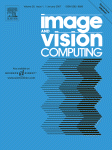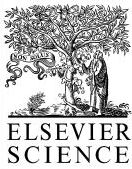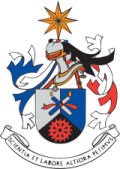|
Departamento
de Informática da Universidade da Beira Interior |
|
Contact: SOCIA Lab. – Soft Computing and Image
Analysis Group Department of Computer Science, University of Beira
Interior, 6201-001 Covilhã, Portugal |
News: ·
October
16th, 2009: The registration of participants for the complementary
part of the contest (NICE:II) has already began. Please, see further
details at: http://nice2.di.ubi.pt. ·
October
15th, 2008: The classification of the NICE.I best participants
is available on the contest website. Additionally, the full classification
results were sent by email to all participants. Participants
invited to publish their approach on the Image and Vision Computing Journal:
All
the remaining participants are invited to publish their approach in the
NICE.I contest proceedings. Please, contact the NICE.I Organizing Committee
for further instructions. ·
September
29th, 2008: The deadline for the final submission of the
participations is September 30th, 2008 (24:00 Greenwich time).
Please send your executable files (or MATLAB functions) to the
contest email: nice1@di.ubi.pt. ·
August
27th, 2008: According to the various request, the new deadline
for the submission of participations to the NICE.I contest is September 30,
2008. Due to this, the expected date to publish the contest classification
will be October 15, 2008. All the remaining dates have been kept. Also, the
NICE.I Organizing Committee decided to accept MATLAB functions (.m files) as
valid participations. If you developed yours segmentation method in the
MATLAB environment, you are free to send us the source functions, together
with a small explanation about how to execute them. ·
April
17th, 2008: According to the requests of various participants,
we added a new evaluation measure of NICE.I participants that will also be
used in the final evaluation: error=0.5 * FPR + 0.5 * FNR, where FPR and FNR
respectively stand for False Positive and False Negative Rate. Further
details are given in the Evaluation page. ·
January
8th, 2008: 5 manually classified images of the training data
set were found incorrect. The corrected images should be copied into
NICE1/Data/Training/Classes and can be downloaded here. ·
January
7th, 2008: The Java Automatic Evaluation Framework and the
UBIRIS.v2 training data set are now available to registered NICE.I
participants. These files can be downloaded here. ·
December
28th, 2007: A post-doc position at the SOCIA Lab is available here. Deadline for
applications is January, 18th 2008. ·
November
23th, 2007: A forum page about the NICE.I contest was
released. It can be accessed either by registered NICE.I participants or
visitants. Please, see the “Forum”
page. ·
October
29th, 2007: Due to the highly time-consuming task of manual
classification of the noise-free/noisy regions for all the training set
images of the NICE.I contest, we regret to inform that the delivery of the
training data set and of the evaluation Java framework was delayed to January,
7th 2008. More information about
the new calendar of the NICE.I contest can be found at http://nice1.di.ubi.pt/dates.htm ·
August
7th, 2007: The Biometric Technology Today Journal
published a first page article about the NICE.I contest. The article
can be found here. ·
July
1st 2007: Start of the NICE.I application forms reception
period (Deadline: October 31th, 2007). Please, see the “Registration” page for further
details. ·
June
26th, 2007: Elsevier
Image and Vision Computing Journal has accepted to publish a Special
Issue with a selection of the participations that achieve the best NICE.I
contest results. Within the biometric context, the iris
is usually accepted as one of the most accurate traits and has been
successfully applied in such distinct domains as airport check-in or refugee
control. However, for the sake of accuracy, present iris recognition systems
require that subjects stand close (less than two meters) to the imaging
device and look for a period of about three seconds until the data is
captured. Upon these constrains some contests were performed, whose aim was
the evaluation of the recognition accuracy on noise-free data. (e.g., the
Iris Challenge Evaluation, ICE). However, the cooperative behavior
demanded to the users and the highly constrained imaging conditions clearly
restrict the range of domains where iris recognition can be applied. It is
highly probable that image capturing on less constrained conditions (either
at-a-distance, on-the-move, with minor users' cooperation and within dynamic
imaging environments) lead to the appearance of extremely heterogeneous
images and with several other types of data in the captured iris regions
(e.g., iris obstructions due to eyelids or eyelashes, reflections, off-angle
or motion blurred images). For the terms of this contest, all these factors are considered as noise. The UBIRIS
database was developed widthin the SOCIA Lab. (Soft Computing and Image
Analysis Group) of the University of Beira Interior (Portugal) and released
in September, 2004. Its most fundamental characteristic is the high levels of
noise that images contain, to simulate less constrained image
capturing conditions. This database was downloaded by over 500 users (individuals
and academic, research and commercial institutions) from over 70 different
countries of the world. The Noisy Iris Challenge Evaluation -
Part I distiguishes from the above mentioned contests, as: ·
It
operates on noisy iris images, similar to the ones contained by the UBIRIS
database. These images will constitute
the second version of the UBIRIS
database (UBIRIS.v2). This database has more images and with new and more
realistic noise factors, when compared to its predecessor. ·
The
contest will be the only way to
legally obtain the UBIRIS.v2 image database (for a period of 18 months).
This version of the database is significantly
extended and with new and more
realistic noise factors, when compared to its predecessor. ·
It
exclusively evaluates the iris
segmentation and noise detection stages, allowing the independent
evaluation of these tasks from the iris encoding and recognition algorithms. |
|
|
fghfghfghfgh
DI-UBI Bloco VI Rua Marquês de Ávila e Bolama P- 6201-001
Covilhã PORTUGAL





